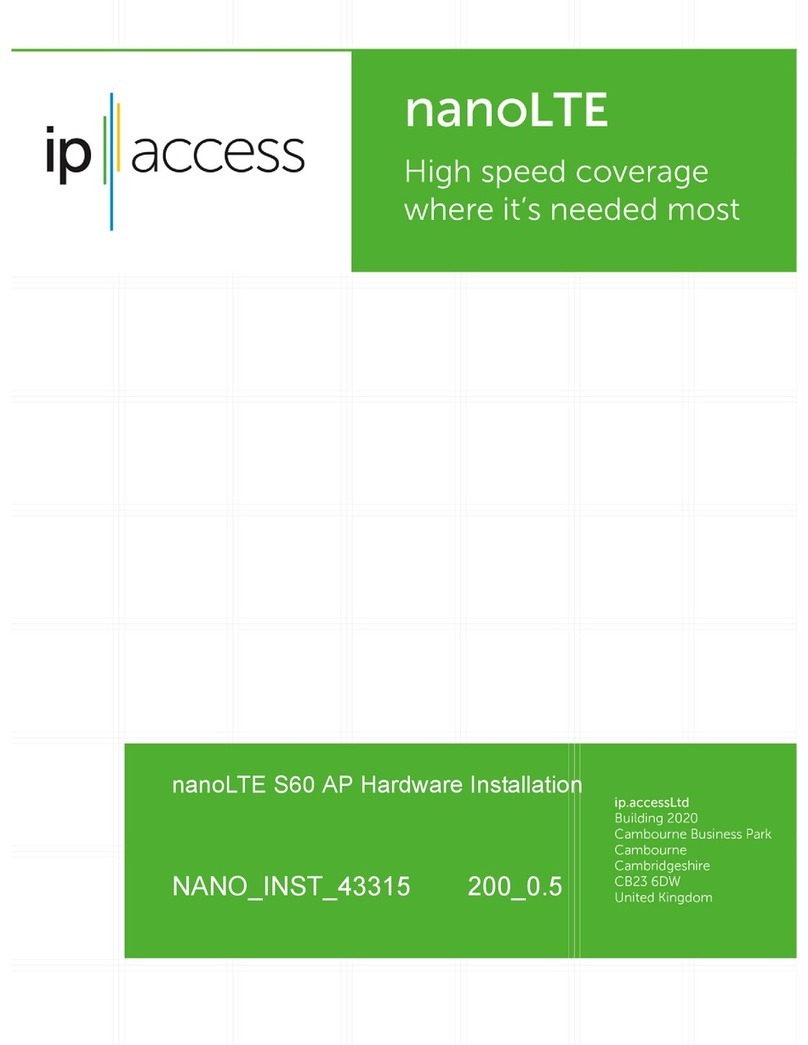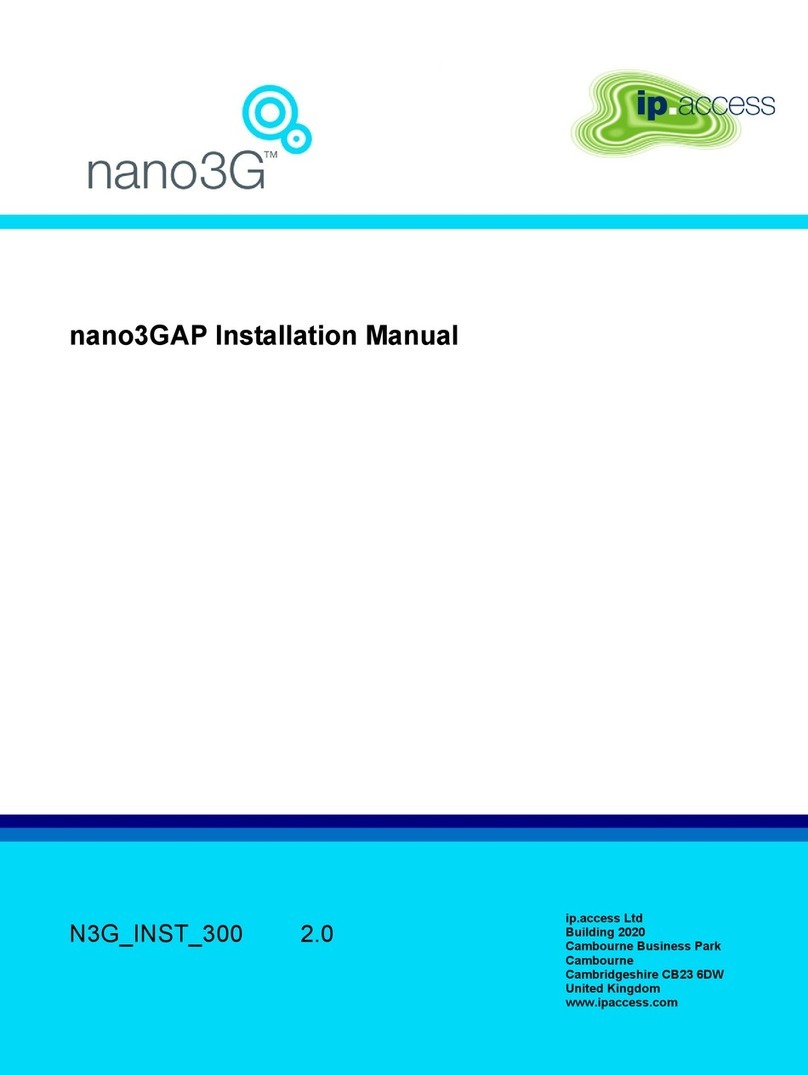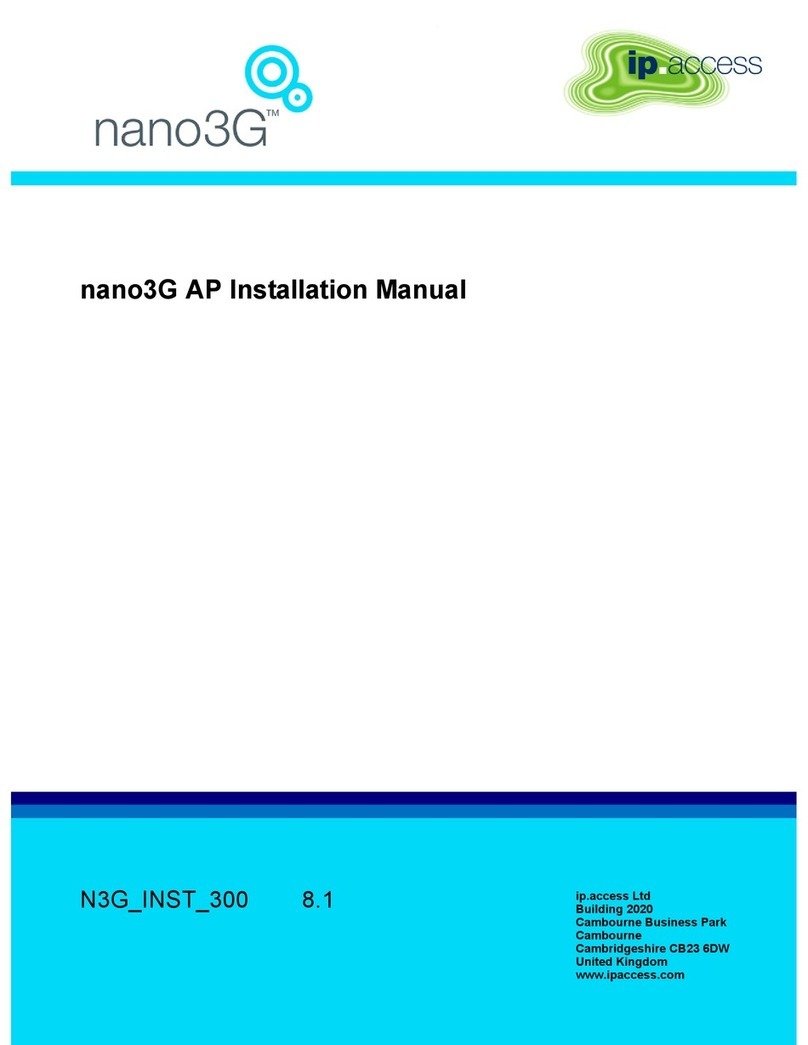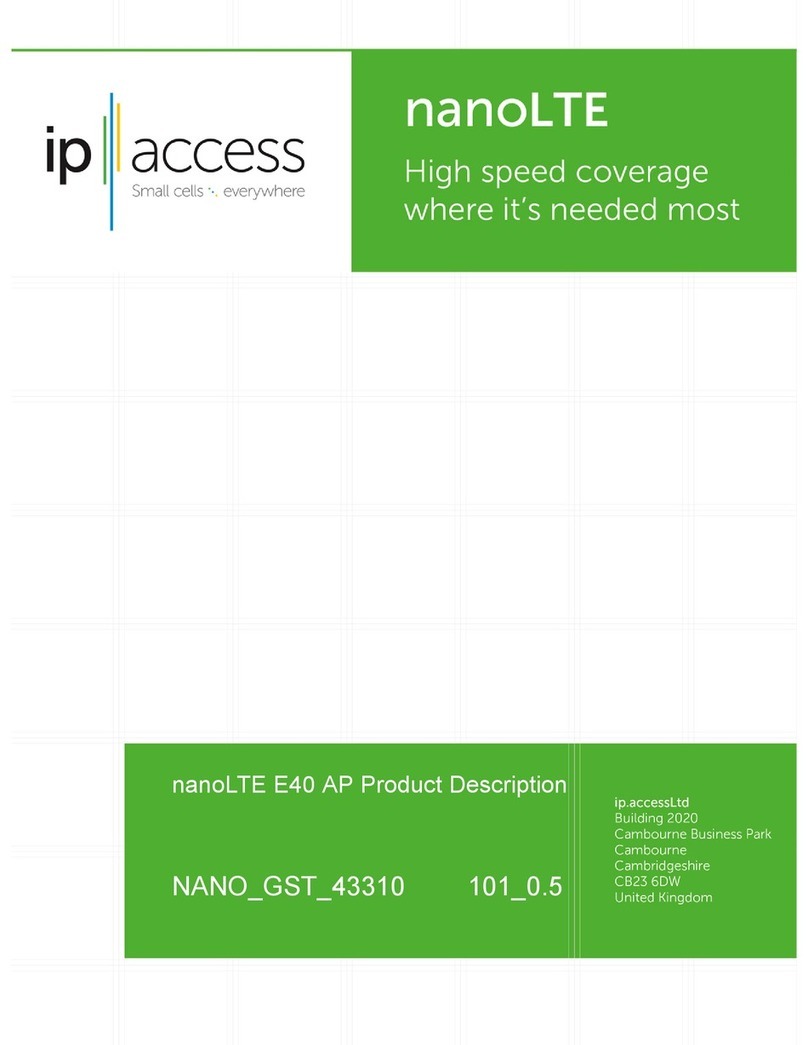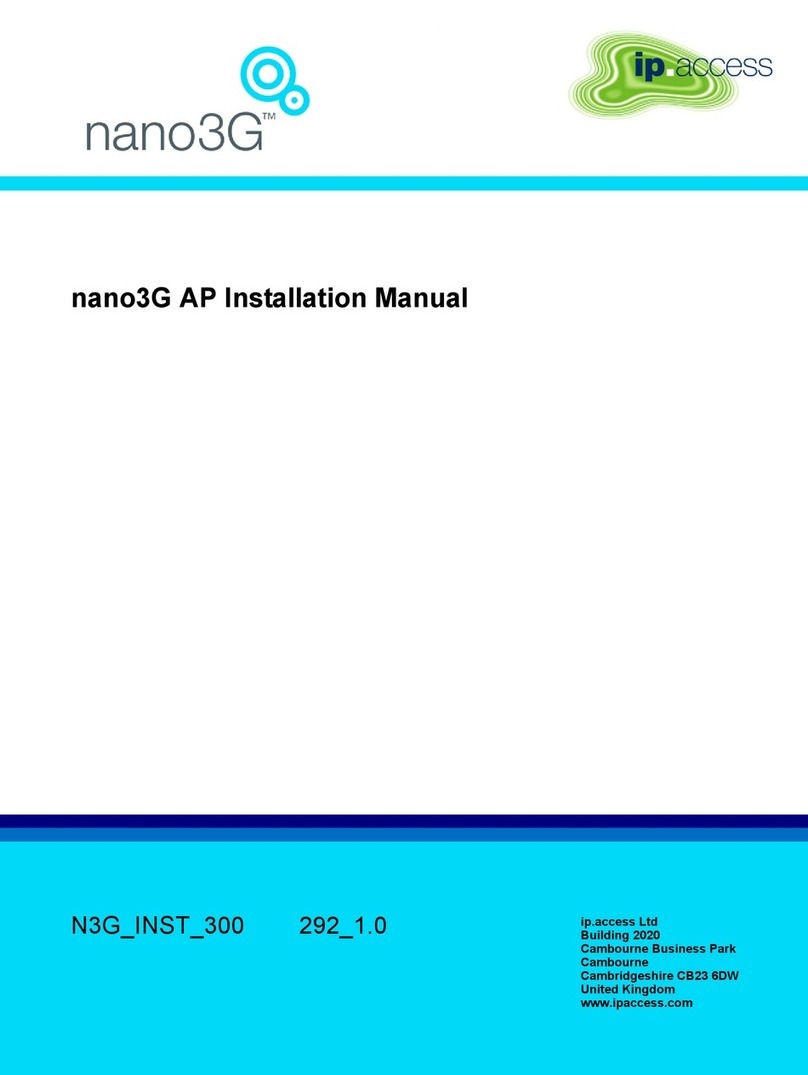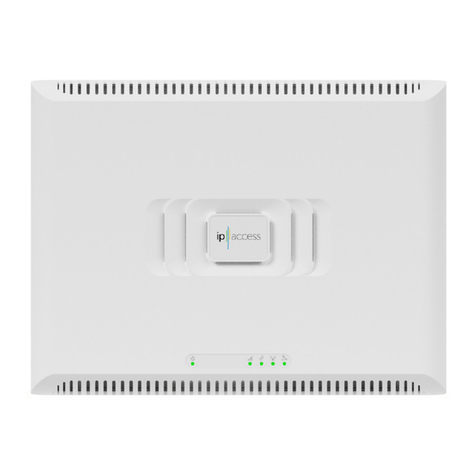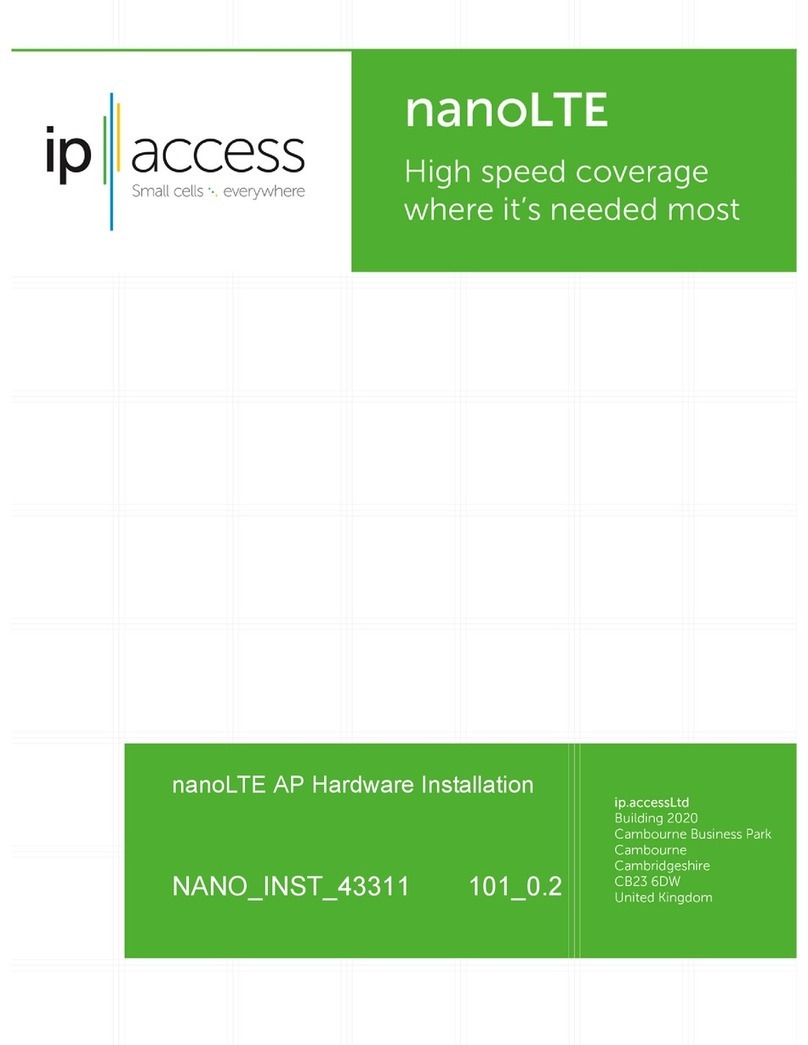nano3G AP Installation Manual Contents
N3G_INST_300 v14.0 for N3G_2.85 © ip.access Limited 2012 Page ii
4 Configuration File Preparation ........................................................... 33
4.1 Overview of Configuration Files ....................................................................... 33
4.2 Create a Configuration File for a nano3G AP .................................................. 34
5 Commission a nano3G AP.................................................................. 36
5.1 Configure a Commissioning Terminal to Connect to the AP............................ 36
5.2 Start Up the AP ................................................................................................ 37
5.2.1 Start up a nano3G S8 AP................................................................................... 37
5.2.2 Start up a nano3G E8 AP or E16 AP ................................................................. 37
5.3 Access the Commissioning Web Page for the AP ........................................... 38
5.4 Download Activities.......................................................................................... 39
5.4.1 Optional - Software Download............................................................................ 39
5.4.2 ATAS Check and Download............................................................................... 40
5.5 Configure the Connection to the SCP.............................................................. 41
5.5.1 Static IP Configuration........................................................................................ 41
5.5.2 Configure the SCP Connection .......................................................................... 42
5.5.3 Complete the AP Commissioning....................................................................... 42
5.6 Commissioning Finished.................................................................................. 43
5.6.1 Finished On Site Commissioning ....................................................................... 43
5.6.2 Finished Advance Commissioning ..................................................................... 43
6 nano3G AP Hardware Installation ...................................................... 44
6.1 Warnings and Regulatory Information ............................................................. 44
6.2 nano3G S8 AP Hardware Installation .............................................................. 45
6.2.1 Unpack the nano3G S8 AP ................................................................................ 45
6.2.2 Commission the nano3G S8 AP......................................................................... 46
6.2.3 Cable Connections ............................................................................................. 46
6.2.4 Mount the nano3G S8 AP .................................................................................. 47
6.3 nano3G E8 AP and E16 AP Hardware Installation .......................................... 51
6.3.1 Unpack the nano3G E8 AP or E16 AP............................................................... 51
6.3.2 Removable Cable and Antenna Covers ............................................................. 51
6.3.3 Antennas ............................................................................................................ 52
6.3.4 Commission the AP............................................................................................ 53
6.3.5 Cable Connections ............................................................................................. 53
6.3.6 Mount the nano3G E8 AP or E16 AP on a Wall ................................................. 55
7 Finalize Installation.............................................................................. 59
7.1 Check and Upgrade the nano3G AP Software Image ..................................... 59
7.1.1 Check the Current Software Image Version....................................................... 59
7.1.2 Download the Latest Software Image from the SCP to the AP .......................... 60
7.2 Finalize Configuration ...................................................................................... 61
7.2.1 Final Attribute Changes and Checks.................................................................. 61
7.2.2 Automatic Configuration Backup ........................................................................ 61
7.2.3 Network Listen and Frequency Correction ......................................................... 61
7.3 Bring the AP into Service ................................................................................. 62






